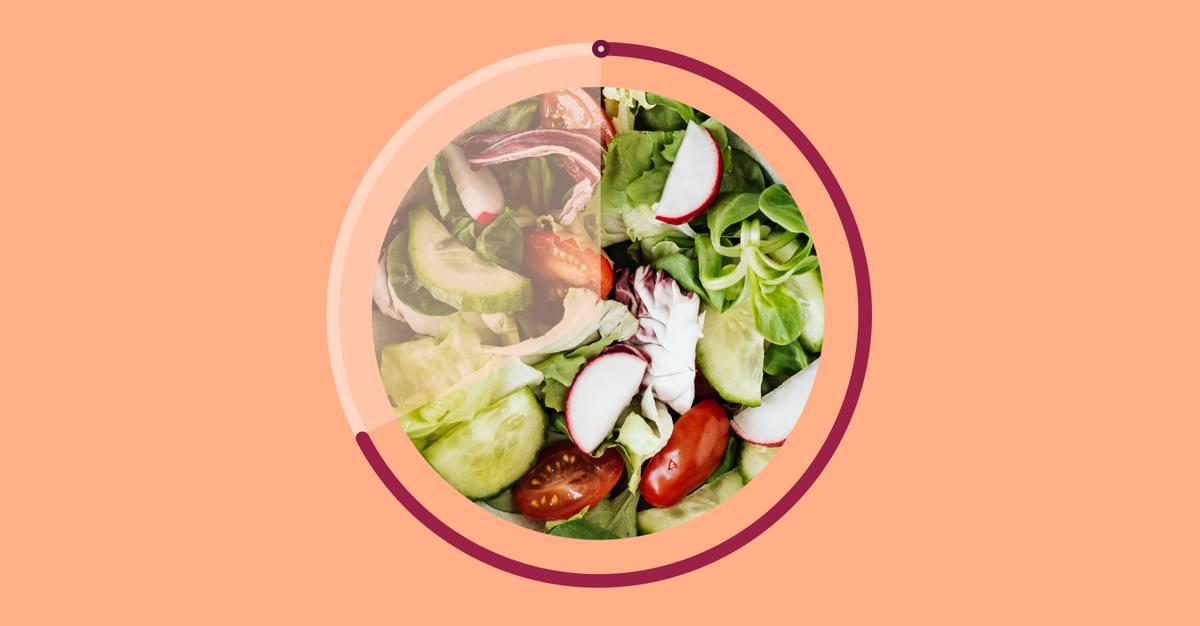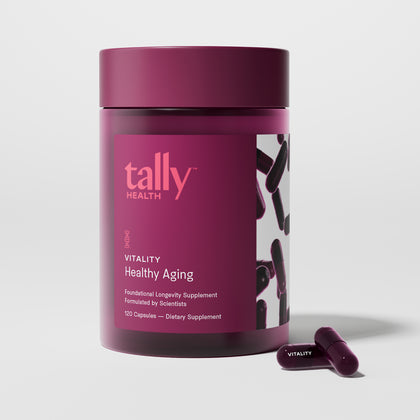

One poll found that the average person will try 126 diets in their lifetime, and up to 65% of them will fail [1, 2]. It’s the constant calorie counting and restrictive eating habits of most diets that make them unsustainable. Enter intermittent fasting, a marked departure from conventional dieting. Instead of focusing on what you eat, intermittent fasting focuses on when you eat.
Intermittent fasting is intuitive from an evolutionary perspective, as it aligns with how humans adapted to cycles of feast and famine throughout history.
While intermittent fasting might be trendy, the science backs up claims around its ability (when done properly) to help people not just shed weight but also avoid caloric excess. At this time, however, it remains unclear if any other benefits are offered beyond controlling caloric intake. In addition, there are potential downsides to intermittent fasting to consider.

The fast and the curious: how intermittent fasting works
When we eat, our bodies release insulin that tells our cells to store glucose from the blood to use as energy. However, when we fast, insulin levels drop, and our bodies start to break down stored fat to use for energy. Ketones—molecules that your body makes as a byproduct of breaking down fat—eventually replace glucose as our body’s main source of fuel. Ketones are also signaling molecules that regulate the expression and activity of molecules that affect health and aging in animal studies [3]. They also boost brain-derived neurotrophic factor (BDNF), nicknamed “Miracle-Gro” for your brain, which helps grow new brain cells and may protect against neurodegenerative diseases [4].
The 16:18 method

The most popular intermittent fasting method is 16:8, a form of time-restricted eating, where you fast for 16 hours each day and eat during an 8-hour window (e.g. 11 am-7 pm). Time-restricted means limiting food intake to a specific daily window, typically ranging from 6 to 12 hours. Other types include:
The 12:12 method
Fast for 12 hours each day (typically overnight) and eat within a 12-hour window each day. This could look like eating an early dinner and not having breakfast until 12 hours later the following morning. This is a much more achievable method and aligns with general recommendations to avoid eating too close to bedtime.
The 5:2 method

Eat normally for five days per week and then eat no more than 600 calories on two days per week. Protein intake and muscle maintenance is a potential concern here.
Eat stop eat

A 24-hour fast that occurs one to two times each week. Muscle maintenance and adequate protein intake is a potential drawback to this approach.
Alternate-day fasting

Fast every other day, and on the other days (non-fasting days), eat normally. One concern with this approach is the lack of protein intake on fasting days can contribute to muscle loss.
Fueled for success: The potential benefits of intermittent fasting
Intermittent fasting has been reported to reduce inflammation, obesity, and insulin resistance while also enhancing cognition in aging mice [5, 6]. It may also help ease brain fog and improve sleep [7]. While the human data is still limited, existing research suggests that intermittent fasting may influence aging on molecular and cellular levels. It is, however, important to keep in mind that much of the mouse data compares intermittently fasted mice to mice that are allowed to feed endlessly. As such, the benefits may be explained by mitigating caloric excess and promoting metabolic health.
There is growing evidence that intermittent fasting diets can have significant health effects in both the short term and long term, though most evidence is based on short term studies, with limited long term data available. Studies lasting several weeks have shown that intermittent fasting and related eating patterns, such as alternate day modified fasting and time-restricted eating, can lead to improvements in risk factors for disease, including reductions in blood pressure, cholesterol, and heart disease risk, particularly in overweight individuals. Intermittent fasting is closely linked to reductions in disease risk, such as diabetes and cardiovascular disease, and these benefits are supported by evidence from clinical trials. However, some people may experience side effects like constipation or feeling tired during fasting periods.
Intermittent fasting can help with losing weight and managing weight gain, and some of the same benefits may be achieved through calorie restriction, low carbohydrate diets, or other healthy eating patterns. Nutrition plays a key role in the effectiveness of these diets, as the balance of carbohydrates and the adoption of low carbohydrate eating patterns can influence metabolic health and overall outcomes. Intermittent fasting and related dietary interventions are also being studied as potential treatment options for metabolic and age-related diseases.
Inhibits mTOR
Eating throughout the day and an overconsumption of calories risk overactivation of mTOR. While normal stimulation of mTOR is vital for protein synthesis and muscle growth, overstimulation of mTOR has been shown to shorten lifespan in animal models [8].
Triggers autophagy
Intermittent fasting triggers SIRT6, an epigenetic regulator that, when activated, results in autophagy (removal of old and damaged cell parts) and reduced oxidative stress [10]. Spermidine, one of the ingredients in Vitality, is a well-established inducer of autophagy.
Activates sirtuins
A family of proteins known as sirtuins rise during intermittent fasting. These proteins are involved in everything from genome stability and mitochondrial function to cellular metabolism [11].
Protects against caloric excess
As we age, we become more at risk for disease. By protecting against caloric excess, intermittent fasting may help protect against type 2 diabetes and cardiovascular disease. Clinical trials suggest that intermittent fasting may have potential for protecting against neurological disorders and cancer [12, 13, 14].
Getting started with intermittent fasting

If you are interested in trying intermittent fasting, there are a few things you should keep in mind:
Before making significant changes to your eating pattern or starting intermittent fasting, especially if you have underlying health conditions, consult with a healthcare professional to ensure it is safe and appropriate for you.
Choose your window
Choosing your eating pattern and window is the first step in intermittent fasting. For example, with the 16:8 method, most people opt for two meals a day: either breakfast and lunch or lunch and dinner. If you are someone who isn’t hungry in the morning, then you may choose to break your fast at 11 am or noon and then have until 7 pm or 8 pm to consume your meals. Consider your working hours, social commitments, and any medications that require food when planning your window. Align your last meal so it’s about 3 hours before bedtime to prevent digestion from disrupting your sleep. The 12:12 method is the simplest to implement and one that is generally compatible with various social commitments.
Start slowly
If you're new to intermittent fasting, fasting experts suggest beginning with a 12-hour fasting window and gradually extending it to 16 hours if desired. Pay attention to how your body responds and make adjustments accordingly.
Get the proper nutrients
It’s important that you are eating well-balanced, nutritious meals during your designated eating window, with a focus on healthy foods such as fruits, vegetables, nuts, legumes, and whole grains. When breaking your fast, you’ll want to avoid refined carbs, which can spike your blood sugar and increase cravings, and choose options like eggs with avocado and cooked veggies or a leafy green salad with wild-caught salmon or edamame. Protein, in particular, is critical to optimize in order to protect against muscle loss.
Stay hydrated
Water is the best way to ensure you stay hydrated throughout the day. It’s important that you’re getting enough water while you fast; otherwise, you may experience headaches, dizziness, or fatigue.
Can anyone do intermittent fasting?
Intermittent fasting is not recommended for certain individuals, including women who are pregnant, children and teenagers who are still developing, underweight individuals, those with hypoglycemia, and those at risk for eating disorders. It’s important to consult with your doctor before you start intermittent fasting to make sure it’s right for you.
How to include Vitality in your intermittent fast

Want to balance the intake of our longevity supplement, Vitality, with your intermittent fasting routine? Try taking Vitality with a small amount of healthy fats, like a small amount of extra-virgin olive oil or a spoonful of fat-containing yogurt.
But wait—won’t that break a fast? While the answer is unclear, small quantities of healthy fats like a spoonful of pure almond butter or 1 tablespoon of extra-virgin olive oil typically do not cause insulin spikes, allowing your body to maintain its fat-burning state while also assisting your body in efficiently absorbing Vitality, so you can start your day with a dose of well-being.
What is Intermittent Fasting?
Intermittent fasting is a way of eating that focuses on when you eat, rather than what you eat. It involves cycling between periods of eating and fasting, and aligns with how humans adapted to cycles of feast and famine throughout history.
How does Intermittent Fasting work?
When you fast, insulin levels drop and your body starts breaking down stored fat for energy, producing ketones. These ketones not only serve as fuel but also act as signaling molecules that may impact aging and brain health.
What are the benefits of Intermittent Fasting?
Intermittent fasting has been linked to reduced inflammation, insulin resistance, and obesity in animal studies. In humans, it may help improve sleep, reduce blood pressure and cholesterol, and protect against type 2 diabetes, cardiovascular disease, and possibly neurodegenerative diseases.
Recommended Supplements
Citations
[1] Headly, CW. The Ladders. (2020, January 2). The average adult will try this shocking number of diets in their lifetime. Retrieved from https://www.theladders.com/career-advice/the-average-adult-will-try-this-shocking-number-of-diets-in-their-lifetime
[2] Great Green Wall. (2023). Diet Failure Statistics 2023 | Why Do Diets Fail? Retrieved from https://www.greatgreenwall.org/supplements/diet-failure-statistics
[3] Mattson, M. P., & Cabo, R. (2019). Effects of Intermittent Fasting on Health, Aging, and Disease. The New England Journal of Medicine, 381, 2541-2551. https://doi.org/10.1056/NEJMra1905136
[4] Lu, B., Nagappan, G., Guan, X., Nathan, P. J., & Wren, P. (2013). BDNF-based synaptic repair as a disease-modifying strategy for neurodegenerative diseases. Nature Reviews Neuroscience, 14(6), 401-416. https://doi.org/10.1038/nrn3505
[5] Redman LM, Smith SR, Burton JH, Martin CK, Il'yasova D, Ravussin E. Metabolic Slowing and Reduced Oxidative Damage with Sustained Caloric Restriction Support the Rate of Living and Oxidative Damage Theories of Aging. Cell Metab. 2018 Apr 3;27(4):805-815.e4. doi: 10.1016/j.cmet.2018.02.019. Epub 2018 Mar 22. PMID: 29576535; PMCID: PMC5886711.
[6] Welton, S., Minty, R., Willms, H., Poirier, D., Madden, S., & Kelly, L. (2020). Intermittent fasting and weight loss: Systematic review. Canadian Family Physician, 66(2), 117-125. https://www.ncbi.nlm.nih.gov/pmc/articles/PMC7021351/
[7] UCLA Health. (2021, December 16). Health benefits of intermittent fasting (and tips for making it work). Retrieved from https://www.uclahealth.org/news/health-benefits-of-intermittent-fasting-and-tips-for-making-it-work
[8] Weichhart T. mTOR as Regulator of Lifespan, Aging, and Cellular Senescence: A Mini-Review. Gerontology. 2018;64(2):127-134. doi: 10.1159/000484629. Epub 2017 Dec 1. PMID: 29190625; PMCID: PMC6089343.
[9] Lamming, D. W., Cummings, N. E., Rastelli, A. L., Gao, F., Cava, E., Bertozzi, B., Spelta, F., Pili, R., & Fontana, L. (2015). Restriction of dietary protein decreases mTORC1 in tumors and somatic tissues of a tumor-bearing mouse xenograft model. Oncotarget, 6(31), 31233-31240. https://doi.org/10.18632/oncotarget.5180
[10] Anton, S. D., Moehl, K., Donahoo, W. T., Marosi, K., Lee, S., Leeuwenburgh, C., & Mattson, M. P. (2018). Flipping the Metabolic Switch: Understanding and Applying Health Benefits of Fasting. Obesity (Silver Spring, Md.), 26(2), 254. https://doi.org/10.1002/oby.22065
[11] Villabla, J.M., de Cabo, R., Alcain, F.J. (2012). A patent review of sirtuin activators: an update. Expert Opinion on Therapeutic Patents, 22(4), 355-367. https://doi.org/10.1517/13543776.2012.669374
[12] Mattson MP, Longo VD, Harvie M. Impact of intermittent fasting on health and disease processes. Ageing Res Rev. 2017 Oct;39:46-58. doi: 10.1016/j.arr.2016.10.005. Epub 2016 Oct 31. PMID: 27810402; PMCID: PMC5411330.
[13] de Cabo R, Mattson MP. Effects of Intermittent Fasting on Health, Aging, and Disease. N Engl J Med. 2019 Dec 26;381(26):2541-2551. doi: 10.1056/NEJMra1905136. Erratum in: N Engl J Med. 2020 Jan 16;382(3):298. Erratum in: N Engl J Med. 2020 Mar 5;382(10):978. PMID: 31881139.
[14] Meynet O, Ricci JE. Caloric restriction and cancer: molecular mechanisms and clinical implications. Trends Mol Med. 2014 Aug;20(8):419-27. doi: 10.1016/j.molmed.2014.05.001. Epub 2014 Jun 8. PMID: 24916302.











